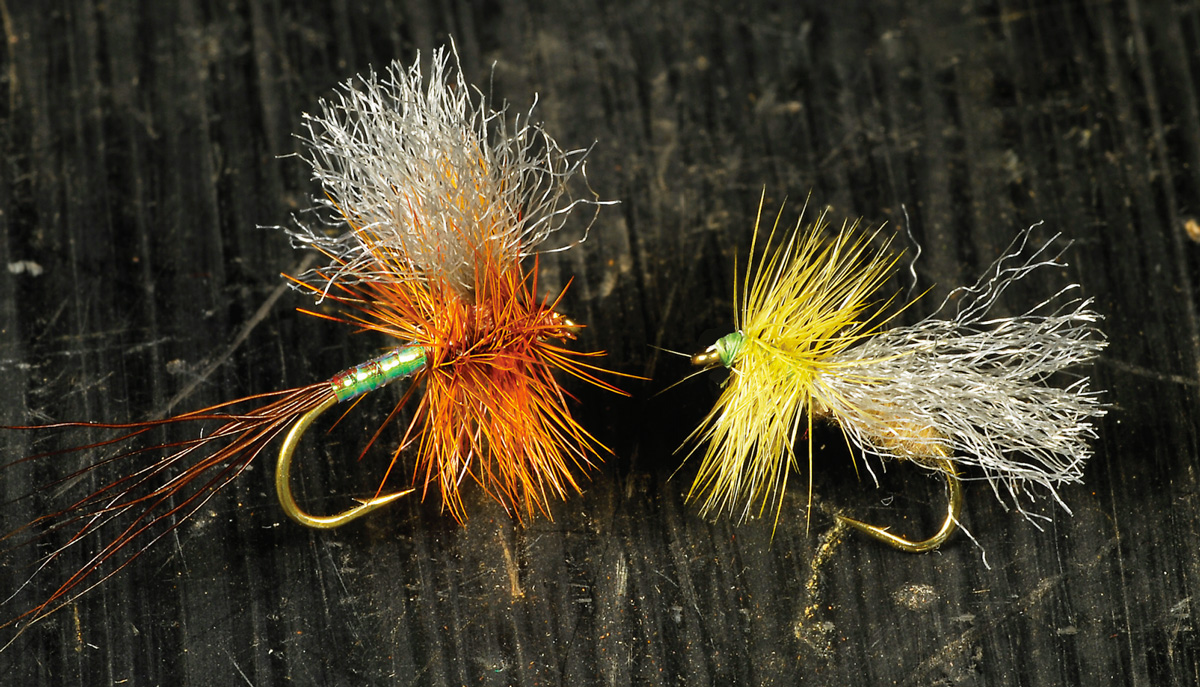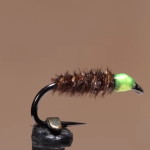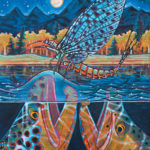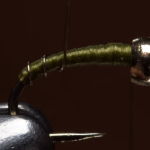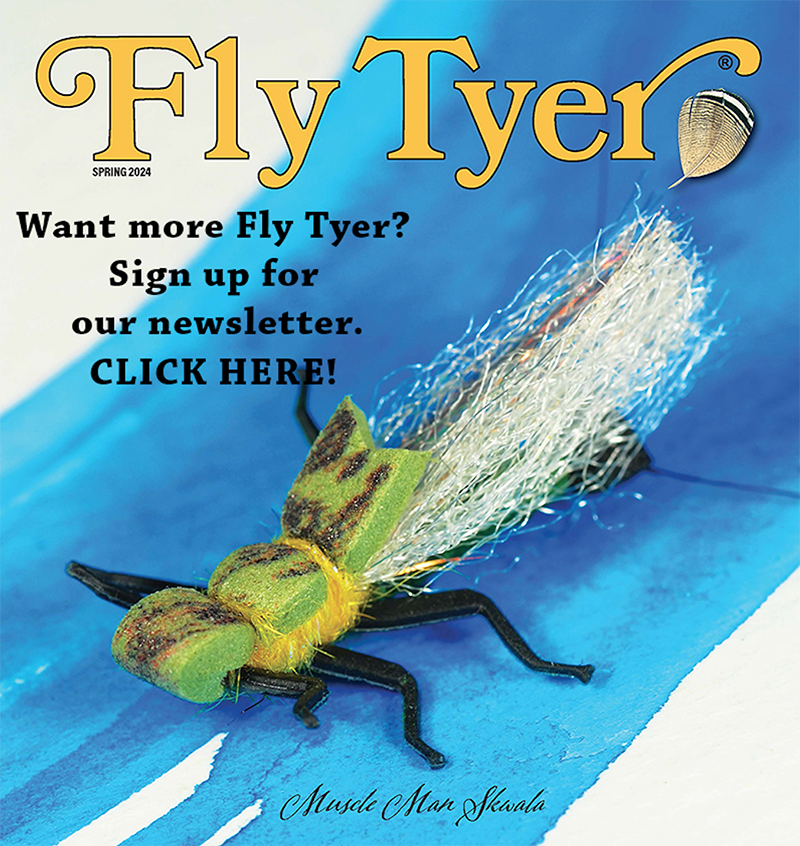Use these tricks to tie great-looking and durable wings on your floating flies.
[by Dennis Potter]
MY LOVE AFFAIR WITH SYNTHETIC DRY FLY WINGS began in the early 1990s. I had the great pleasure of working with the late Calvin “Rusty” Gates and his wife, Julie, proprietors of Gates Au Sable Lodge, located in Northern Michigan. I was a guide, fly fishing instructor, and fly shop rat from 1992 through 1995.
I had tied large numbers of flies for Gates Au Sable Lodge before beginning my other duties in 1992. I churned out several hundred dozen flies each year for Rusty. My specialty was parachutes and other dry flies in sizes 20 to 12. Rusty wanted natural beaver dubbing and deerhair wings for most of patterns. I dreaded cutting, stacking, and erecting hundreds of little deer-hair wings, and believed there had to be a better material.
Back then, we were limited to very few synthetic fibers for tying the wings on dry flies. Polypropylene yarn was the standard ingredient. It made a good looking wing on a finished pattern, but the soft, fine fibers went to mush after catching the first fish, and it was challenging to keep the proper upright wing silhouette on a mayfly. A polypropylene wing also sucked up water like a sponge and made the fly top-heavy.
One spring, I was enjoying a cup of coffee in the shop while leafing through the latest catalog from National Feather Craft. It was always packed with the latest gadgets for fly fishing and new fly tying goodies. While scanning the materials section, I came across a little blurb for a new material called Hi-Viz Wing Material. It stated, “Anything you can do with deer, elk, and calftail or body hair, you can do better with Hi-Vis.” Without Rusty’s knowledge, I ordered some Hi-Vis in a few shades of gray. When the material arrived, I hid it under the counter and took it home that night to create a few parachute wings. That was a real eye-opening experience, and it led to an epiphany in my dry fly tying.
The stiff, slightly crinkled material made great parachute wings. It was available in all the colors I could ever need,was waterproof, required no stacking, left no big hump when tied on the hook, and was easily trimmed to shape. The next day I showed the sample flies to Rusty, and to my amazement, he put me to work tying parachutes for the shop using the new material. The flies were an immediate hit. Since those early days of tying synthetic wings, a multitude of similar materials have hit the market. Virtually all dry fly wings—mayfly emerger, dun, and spinner, as well as caddisfly and stonefly—are more easily constructed using synthetic materials. Look for Hi-Viz, Sparkle Organza, EP Trigger Point Fibers, and similar products at your local fly shop, or ask the shopkeeper for a recommendation; there are far too many of these materials to list them all here.
If the pattern allows, mount the parachute wing first. With the wing in the correct position on the hook, constructing the rest of the fly with proper proportions is a snap. In general, the parachute wing should be back no more than one-quarter of the way from the hook eye to match the wing position of the natural insect.
To imitate the full range of insects I encounter throughout the season, I tie parachute dry flies using a wide assortment of hooks, everything from 2X-long, size 6, down to 2X-short, size 24. I use one technique for tying the wings on size 14 and larger flies, and another for constructing smaller patterns.
Let me show you the tricks for tying synthetic dry fly wings. A lot of tiers find making wings very frustrating, but as you will see, these wings are ideal for making a great many fish-catching patterns.

